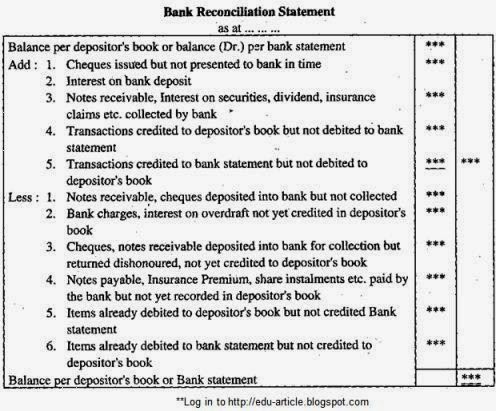
In addition to the built-in tools, Quickbooks Online offers seamless integration with third-party platforms, allowing users to import data from other software systems and streamline the data migration process. The Import Data Tool in Quickbooks Online supports a range of import formats, including Excel, CSV, and TSV, ensuring that users can easily bring in their data regardless of its original format. Once the data is selected for import, the tool offers robust data mapping functionalities, allowing users to match the fields in their imported files with corresponding fields in Quickbooks Online. This process involves identifying and rectifying any inconsistencies, errors, or duplications within the dataset. If you believe the sales receipts were imported incorrectly, or if the imported receipts are no longer required, no need to worry. Our undo feature allows you to easily reverse the sales receipt import process, ensuring that your QuickBooks account returns to its previous state before the import.
Things Need to Know Before Importing Sales Receipts:
The seamless import of sales data and invoices contributes to the overall financial health and success of a company. The seamless integration helps in real-time monitoring of financial health and facilitates comprehensive analysis for informed business planning and growth strategies. We will share valuable tips for a successful data import into Quickbooks Online, including the importance of testing the import with sample data, double-checking data accuracy, and leveraging Quickbooks Online support resources. To copy a sales receipt in QBO, open the receipt you wish to duplicate, click the ‘More’ button, and select ‘Copy.’ This will create a new sales receipt with the same details. Next, map the fields from your file to the corresponding fields in QuickBooks Online.
This underscores the importance of implementing robust data validation techniques to ensure that the imported data conforms to the required format. Utilizing regular expressions, data type checks, and length validations can help identify and rectify invalid formats. Standardized data formatting, such as using common date and time formats, ensures seamless integration and minimizes potential errors. The application will help you with the sample template for easy data mapping, enhancing accuracy and efficiency. When importing sales receipts, even if you encounter any errors, SaasAnt Transactions will identify these errors and assist you in rectifying them.
Step 4: Import sales receipts
To mitigate the impact of import restrictions, businesses can opt for alternative data import methods and explore compatibility with third-party integration tools to streamline the process. An invoice in QBO records sales that are billed to customers for payment later, while a sales receipt records immediate payment and is used for cash transactions. I’ve come to show you the ways how to get your sales receipts imported to QuickBooks, @xtrfishingcharte. Save time by uploading your receipts and bills from vendors to QuickBooks Online.
Please enable “Auto Creation of List Entities (Vendor, Customer)” feature in import settings to create the customer automatically. 9) Select the “Review” button to view the mapped Excel data according to the QuickBooks file headers. Dancing Numbers helps small businesses, entrepreneurs, and CPAs to do smart transferring of data to and from QuickBooks Online. This means QuickBooks can’t extract all the right information and needs more details before it creates an expense.

How to Import Sales Receipts into QuickBooks Online?
Users can take advantage of key integration features, including automatic syncing of data, customizable mapping of fields, and the seamless transfer of records. Structured data organization enhances the efficiency of data vertical analysis definition and meaning retrieval and processing, promoting accuracy and consistency in financial reporting and analysis. Ultimately, it streamlines financial operations and supports informed decision-making. Use SaasAnt Transactions’ ‘Preview Mapping’ feature to verify that fields from your file align correctly with QuickBooks Online fields, ensuring accurate data import. You can import your sales receipts to QuickBooks Online using a third-party application.
The Import Data Tool empowers users by allowing them to map fields during the import process, ensuring that the data is accurately placed in the desired fields within Quickbooks Online. The tool also provides detailed guidelines and best practices to assist users in achieving a smooth and error-free data import market equilibrium economic lowdown podcasts process. In today’s digital age, businesses are increasingly relying on Quickbooks Online to streamline their financial management processes. One crucial aspect of utilizing this powerful accounting tool is the accurate import of data. Whether it’s customer information, invoices, or inventory items, the process of importing data into Quickbooks Online requires careful preparation and execution to ensure seamless integration and accurate reporting. Importing sales receipts into QuickBooks Online streamlines financial management and ensures accurate record-keeping.
Support
With SaasAnt Transactions Online, you can easily import bulk sales receipts into QuickBooks Online. Also, the application syncs sales receipts seamlessly, updates inventory levels, and manages accounts receivable efficiently. Invalid data formats during the import process can pose challenges for data integration, causing import limitations, data validation failures, and necessitating comprehensive data format standardization. This integration provides numerous benefits, such as the ability to consolidate all financial information in one place, streamline workflows, and gain a comprehensive view of business operations.
- Leveraging the comprehensive support resources offered by Quickbooks Online can provide businesses with the necessary guidance, troubleshooting assistance, and error resolution strategies for a seamless data import process.
- The Import Data Tool in Quickbooks Online supports a range of import formats, including Excel, CSV, and TSV, ensuring that users can easily bring in their data regardless of its original format.
- Invalid data formats during the import process can pose challenges for data integration, causing import limitations, data validation failures, and necessitating comprehensive data format standardization.
- SaasAnt Transactions facilitates easy data review and corrections, helping you identify and resolve any errors.
- In QuickBooks Online Advanced, you can import multiple sales receipts using Batch transactions and Import via CSV.
Importing data into Quickbooks Online is crucial for businesses looking to seamlessly transition their net asset classifications: change is here! financial records, customer information, and inventory details into a centralized and efficient platform. Yes, you can automate sales receipt imports using SaasAnt Transactions’ integration with email, FTP/SFTP, and Zapier to streamline data upload processes. Once you have confirmed the data’s accuracy, click ‘Upload’ to import your sales receipts data into QuickBooks Online. Review the imported data to ensure accuracy and proper alignment of details.
Importing sales receipts into QuickBooks Online (QBO) is a crucial step for maintaining accurate financial records and streamlining accounting processes. This guide will walk you through the essential steps to efficiently import sales receipts using SaasAnt Transactions. By following these procedures, you can ensure data accuracy, minimize errors, and enhance your financial management practices in QuickBooks Online. With this tool, users can efficiently import data such as invoice, sales receipts, bills, and contacts from other accounting systems, saving time and reducing manual data entry errors.

Recent Comments